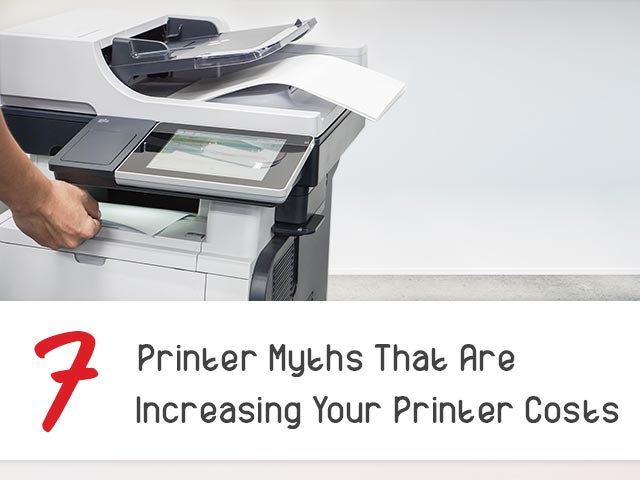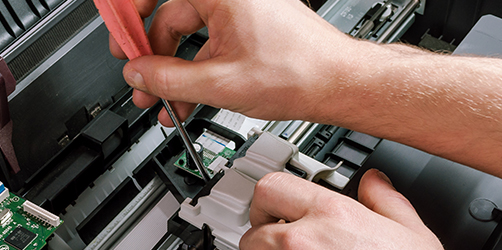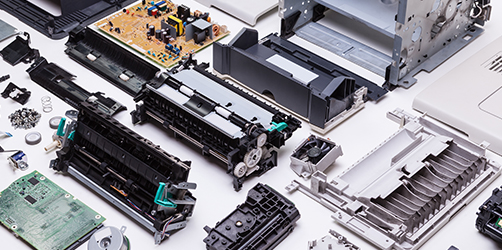7 Printer Myths That Are Increasing Your Printing Costs


Myths can be fascinating. There are so many to choose from – the Lochness monster, Bigfoot, King Arthur – keeping track of all of them is a very tall task. However, we don’t expect the Greek gods to be living among us, nor do we think the earth is flat. Myths are to entertain, but they aren’t real. The same goes for myths that surround business printing. These printer myths sound amazing to the ear, but there are no happy endings to them. What happens is your printer costs go deep in the red and your productivity level falls into black.
Here’s 7 of the biggest printer myths out there, and we’re going to set them straight.
Printing Isn’t Costing Your Business Much Money
Printer paper sort of grows on trees, but money doesn’t. Small and midsize businesses soon realize that when they’re printing on average 10,000 pages a year, starting at around $725 to do so. That’s a lot of money. In a lot of cases, companies spend up to 3% of their revenue to compensate printer expenses. What’s worse, 9 out of 10 businesses have no formal print policy and only a third of all small business owners track how much their printing is costing them.
If your business printer is constantly receiving job after job, there’s a good chance the cost to upkeep your printer is just behind rent, payroll and utilities. Printing does cost your business, but at the end of the day you can control your printing expenses. Creating a printer policy that regulates color documents, encourages double-sided printing and promotes the use of digital media for presentations.
Buying Ink Instead of Toner Will Save You Money
A lot of people think that buying ink over toner cartridges will save them money. After all, ink is a lot cheaper than toner. However, that case only works in the short run.
Toner is more economical down the stretch in comparison to ink. It’s going to yield a lot more prints. On top of that, toner makes for faster printer, improved picture quality and siphons unused toner for reuse. Printing with toner also allows you to use a variety of print mediums, including fabrics and glossy paper. This isn’t to say ink isn’t a viable solution either. Ink is perfect for black and white documents or printing large volumes in a short span of time. Choosing between the two options to save yourself money really depends on the printing needs of your business are.
There’s No Need to Replace My Printer Until It Dies
Your printer is no different than your car or phone. Over time, it’s going to become less efficient and wear down significantly. The EPA has found that If you have a printer, copier or scanner that’s 5 years old or older, it’s efficiency will be nearly half of that of a newer model. Basically, you’ll spend more upkeeping an older printing system than you would just buying a new one.
On average, the lifespan of an inkjet printer is three years. In comparison, laser printers will last you anywhere up to six years. Do you think your printer can last that long and perform just as good as it did out of the box? If your printer is well past its end of life, you may want to start shopping for a newer system.
Your Printer Isn’t a Security Concern
The last thing you’d think a hacker would try to take control of in your business is your printer.
The truth is, a hacker could care less about what they gain control of. Hackers are indiscriminate. They don’t care how big or small your business is, to them it’s how they make their money. If they gain a foothold in your network, take over your printer’s capabilities, they can essentially shut down a good portion of your work. If you want to print something, not only will a hacker see what you’re trying to print, they’ll stop the job until you pay them a hefty ransom for them to leave you alone.
Fortunately, you can protect your printer and your business from cyber-attacks even when on a limited budget. Establish good printer policies and have you and your employees stick to them. Make sure your IT service increases the security on your printers, so that your documents are well protected, and you need not worry about a hacker tracking or monitoring your work.
Replace an Ink or Toner Cartridge as Soon as the Low Level Light Turns On
If you were out in a misty lake all by your lonesome and saw Nessie, you’d immediately try and take a picture of it. However, your low battery indicator flashes, what do you do? You take the picture!
When your ink or toner level is below 20%, an indicator will light up your printer. That’s not to say you’re out of ink or toner, just that you’re low. If you’ve been replacing it immediately, you’ve been wasting a lot of money! You could be using your unused ink and toner to mass print your discovery of the Lochness monster! Until you recognize a difference in quality in your prints, there’s no reason to replace an ink or toner cartridge.
Big Brands Means Better Quality
When has big brands ever meant better quality? We can easily look at sodas, cereals, batteries, even clothing as good examples of this. The only thing that big brand ink or toner is good for is working with big brand printers that force you to use only their products. After all, black ink and toner really can’t differ much from one to the next, and it’s hard to really mess up color cartridges.
Your Printer is to Blame for Paper Jams
You can’t blame the Greek gods if a severe thunderstorm suddenly shows up out of nowhere. The same goes for your printer. If there’s a paper jam, there’s a good chance it wasn’t what caused it. When you go and try to sort out the problem, make sure you’re keeping a mental checklist for the following:
- Straighten the stack of paper before inserting it into the tray.
- Double check that all pages are sitting in the same direction.
- Make sure the paper is flush with the guides, so it doesn’t go off on its own during printing.
- Don’t overfill the tray, it’s good exercise to get out of your chair and refill it.
We just busted some of the biggest myths surrounding printing. With this newfound knowledge, we hope you’re able to reduce your printing costs without sacrificing quality or security. For more information, or help with your printer costs or maintenance, feel free to contact us.




